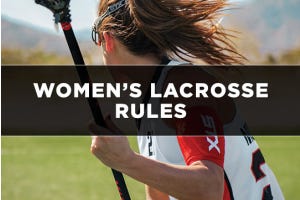Guide to Lacrosse Positions

In today’s article, we will cover what exactly each position does in lacrosse and if there are different types of gear for each. Of course, a d-pole will use a longer stick than a midfielder, but is there a difference in their pads? Find out today! To options for all positions, check out our full selection of lacrosse sticks for all positions.
In this article, we’ll cover:
There are four main positions in lacrosse attack, midfield, defense, and goalie. Each with different responsibilities and gear requirements.
Attack hold a very important role, they control the pace of the offense and are responsible and scoring or getting assists. Most offensive strategies will rely on the attack to maintain possession of the ball and strike when the time is right. Attackmen will use a short stick and will have the same shoulder pads, gloves, and helmets as the rest of the team. However, since they take more checks than any other position, they wear arm guards which offer more protection than the standard arm pad.
The midfielders have to play both offense and defense. They are the first line of defense on one end of the field and play at the top of the box in offense. On offense, they are responsible for getting the ball to the attack and dodging when needed. Like attack, midfielders also use a short stick and wear the same shoulder pads, gloves, and helmets as the rest of the team. But, they will wear arm pads since they take fewer checks and need mobility for defense.
The defense’s role is to stop the other team from scoring. They are responsible for sliding at the right time, communicating with the midfielders, and checking to take the ball away. Defensive players use a long pole to extend their reach on checks and the ability to knock down skip passes. Like the other positions, the only difference in pads is the arm protection. Since defenders are the least likely to get checked, they wear elbow pads, which offer very little protection, but maximize mobility.
The goalie’s role is fairly obvious, save shots from being scored, but they have more responsibilities than one might think. The goalie is not only responsible for saving shots, they are also in charge of guiding the defense and communicating when to slide and who to cover. Due to the goalie having to save shots, they use much different gear than the normal player. Goalies wear much bigger shoulder pads, gloves with more finger protection, and a neck guard, since they do not get checked often they do not wear arm pads, which greatly boosts their mobility. Additionally, they use a much bigger lacrosse head to maximize the ability to save shots. Check out our full line-up of goalie equipment.
There are two specialty positions in lacrosse with very specific roles to cover. The face-off and long stick midfielders. Both are technically midfielders, so they share that role as well.
Face-Off
The face-off position’s role is to take all the face-offs in a game, which happen after every goal, and to begin each quarter. Face-off players are often defensive-minded players who stay on for defense and sub off the field for offense. Face-off players use the same equipment as a normal midfielder however, they use a lacrosse head that is designed for face-offs specifically.
Long Stick Midfielder
The long stick midfielder, or LSM, is a combination of the midfield and defense positions. The LSM plays higher up in the defensive zone, often covering the opponent’s top midfielder. LSMs wear the same equipment but use a long stick instead of a short stick. Since the LSM is a midfielder, they are allowed to cross the midfield and assist in clearing the ball to the attackmen. Teams will use an LSM strategically to add a fourth defender where needed, such as man-down or face-offs.
Due to the offside rules, each position has a designated area to be in on the field. There must be 3 players on the offensive end and 4 on the defensive end at all times during a game. generally, there will be 3 defenders with the goalie on the defensive end and 3 attackmen on the offensive end. The midfielders can freely go to any side during the game.


How many positions are there in lacrosse?
There are four main positions in lacrosse which are: attack, midfield, defense, and goalie. Additionally, there are two specialty positions for face-offs and the long-stick midfielder.
What is a runner in lacrosse?
The runner is another name for a midfielder, given due to the amount that a player runs in a game.
What are the positions in women's lacrosse?
Women’s lacrosse has the same main positions as men’s, attack, midfield, defense, and goalie.
What is the hardest position in women's lacrosse?
The hardest position in women’s lacrosse is goalie, making saves and dealing with the pressure is extremely hard in lacrosse.
Find the Best Selection of Lacrosse Gear for All Positions at LacrosseMonkey!
Now that you know what each lacrosse position is and what they do, check out our full selection of lacrosse sticks for all positions to pick out exactly what fits your positional needs!





